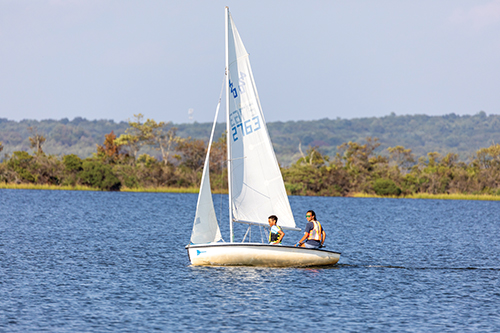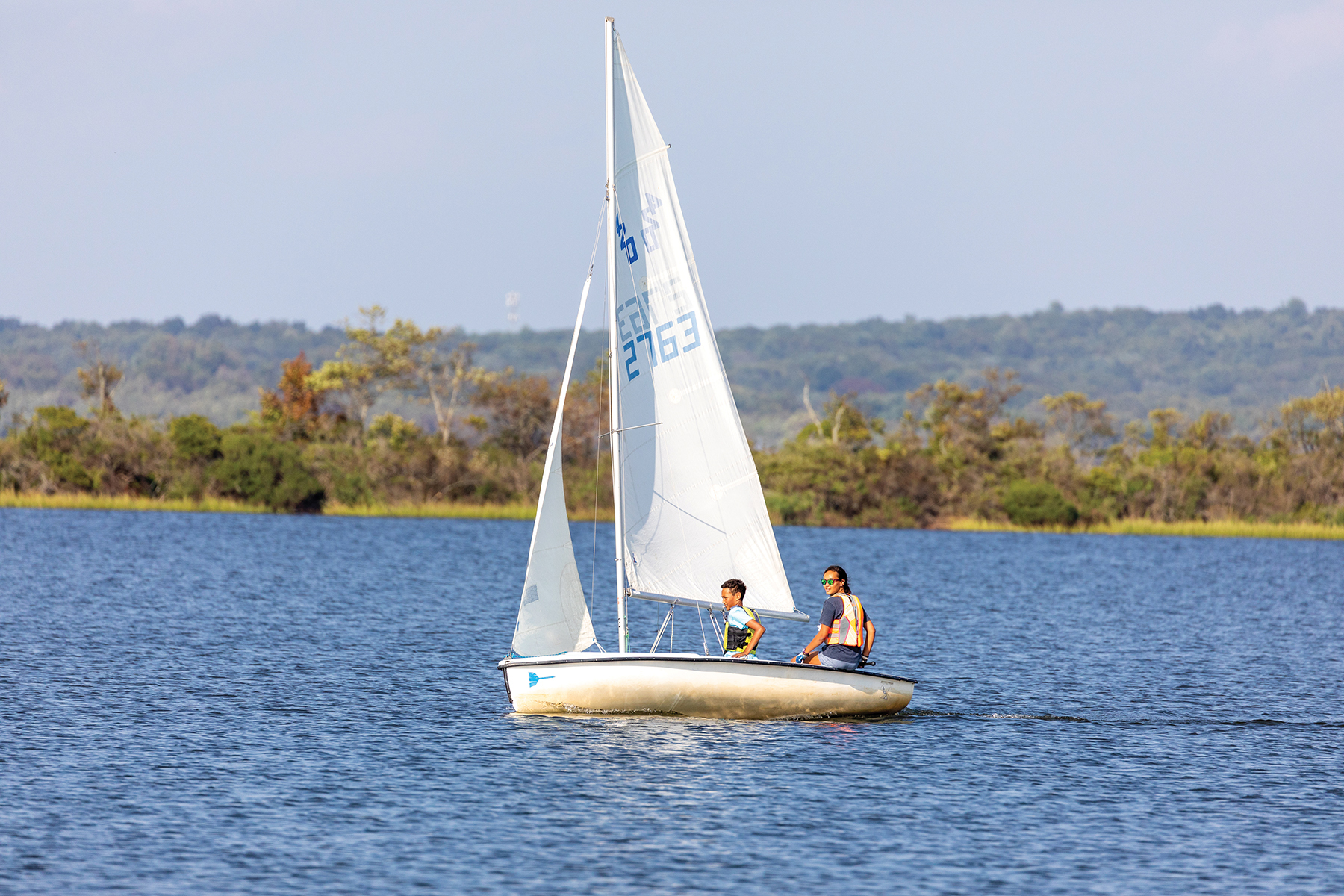
BY NADIA GOODMAN
PHOTOS BY CHRISTOPHER ZAJAC
Among my favorite memories is when my sailing camp got the whole day to race against each other in different sailboats.
At my camp, Regatta Day was held on a weekday, and we were out on the water all day racing. On this specific day, a Thursday, my group was racing my favorite boat called the “420.” I race this boat for two different teams at different times of the year, with a preference for summer races on the Connecticut River. The “420” was designed by Christian Maury in France in 1959. The name refers to the boat’s length…4.2 meters, or almost 14 feet. The “420 is an “International class recognized by the International Sailing Federation” (Wikipedia).
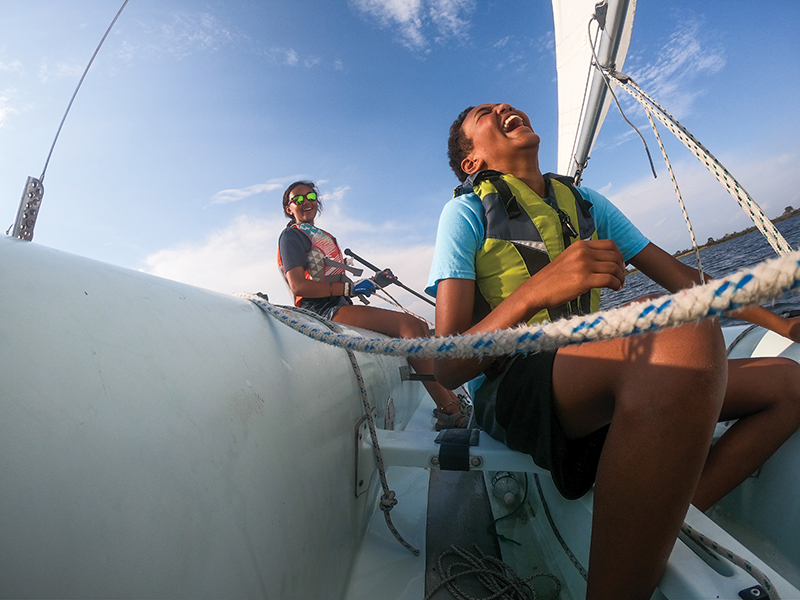
From the moment they are underway, the joy is apparent for Nadia and her brother Gabriel.
This particular day was very windy, which made for an interesting lunch on the busy river. Once we had made our way out of the cove (North Cove, in Old Saybrook, Connecticut) into the green, wavy river, everyone realized what an ordeal our lunch break was going to be. We had just completed one race and were struggling to keep our own boat upright until we had crossed the finish line, followed by lunch accompanied by the groaning wind. As skipper of my boat, I was trying to guide the dinghy away from the center of the River, though it stubbornly wished to do otherwise. It was as if the boats had minds of their own and were trying to give everyone a hard time. The wind caused me to drop my chips into the rolling waves and salt water to come tumbling into the hull. Sailboats spun out of control like blades on a windmill in a heavy storm. One boat capsized and started to float away before it was righted by its crew.
As we worked to keep our boats upright, our two coaches laughed as if we were comedians telling jokes and not the hungry sailors we actually were, each trying to keep our lunch from being swallowed by the seas.
Soon after eating, we put the wind to good use once again and finished our racing for that day. I was rewarded for my hard work at the end of camp when I received a bright red ribbon for my efforts. This camp holds a special place in my memory for several reasons. Sailing is a passion for me. I love the competition. I like the challenge of skippering the boat to win. I even like spending time thoroughly rigging the boat.
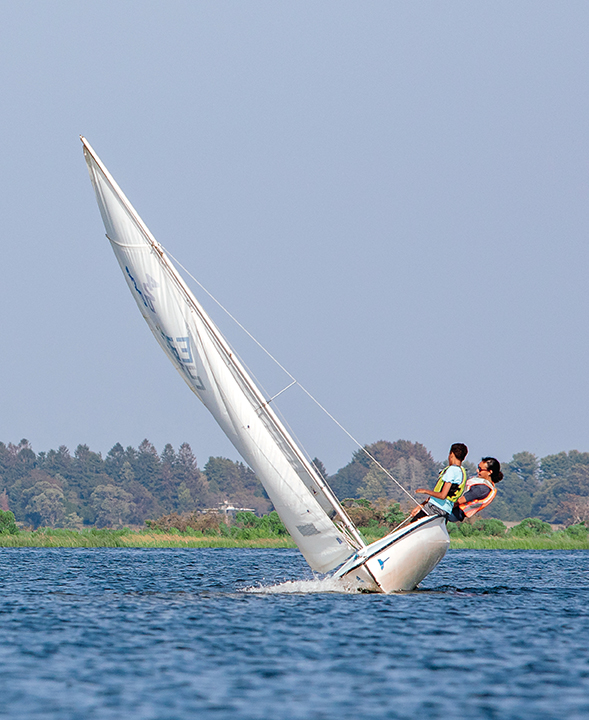
Nadia and her brother Gabriel hike out on their 420 sailboat. Hiking out shifts the weight in the boat to increase stability while sailing faster.
Rigging the Boat
There are two major sails on the 420. The jib (bow) and the mainsail (stern). In all, there are three sails on the boat including the spinnaker.
To rig the jib, you must first find the head (top) of the jib, and the cleat on the port side of the mast, and uncleat it. You must also unhook the jib halyard from the half ring at the front of the mast. Attach the halyard to the jib and take the tack (forward corner) of the jib and clip it behind the forestay using the key ring at the bow of the boat. Hoist the sail and have someone pull on the forestay to create jib tension. Loop the jib halyard through the pulley on the bottom port side of the mast. When you have checked that you have reasonable jib tension for whatever reason you are sailing for, take the two lines at the clue of the jib and lead the lines on either side of the boat inside the shrouds, and outside the trapeze lines if necessary. Lead the line through the jib lead and cleat and tie a stopper knot.
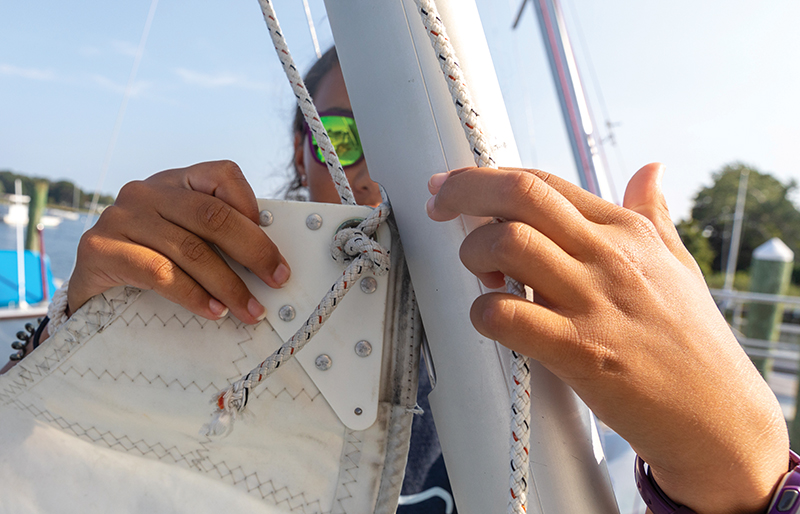
After tying the halyard to the head of the main sail, Nadia slides the bead into the track on the mast as she rigs the boat for the afternoon's sail.
To rig the mainsail, you must find the head of the sail and feed the halyard through the eyelet and tie a stopper knot at the end that will keep the halyard from slipping out. Then lead the luff (strengthened side) of the sail through the track on the mast. Lift the sail by pulling on the halyard and cleat the halyard. Find the clue (outer corner) then insert the slug into the boom track and slide it to the end. Take the outhaul (line attached to the end of the boom) and string it port to starboard through the clue and along the pulley. Pull the line through the pulley and into the jam cleat and pull towards the mast and tie another stopper knot. Take the cunningham from the port side of the mast and put it through the eyelet on the sail. Thread it through a jam cleat on the starboard side of the boom.
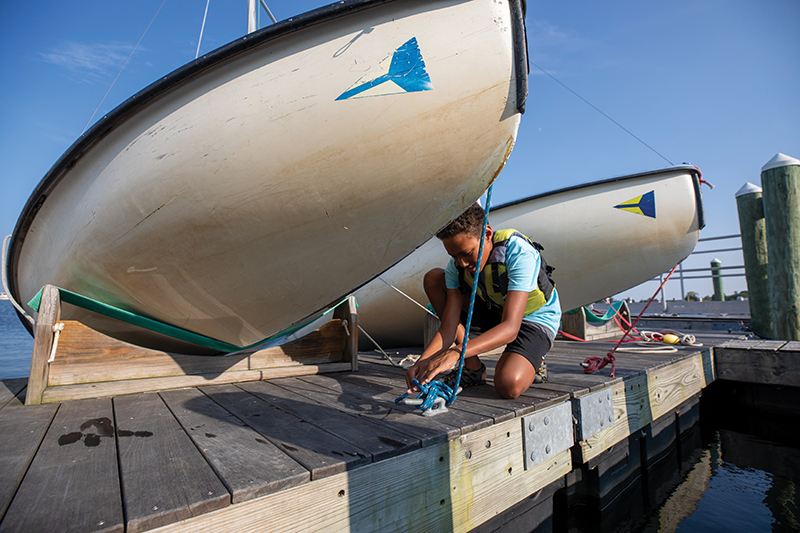
Gabriel secures the boat to the dock after sailing.

